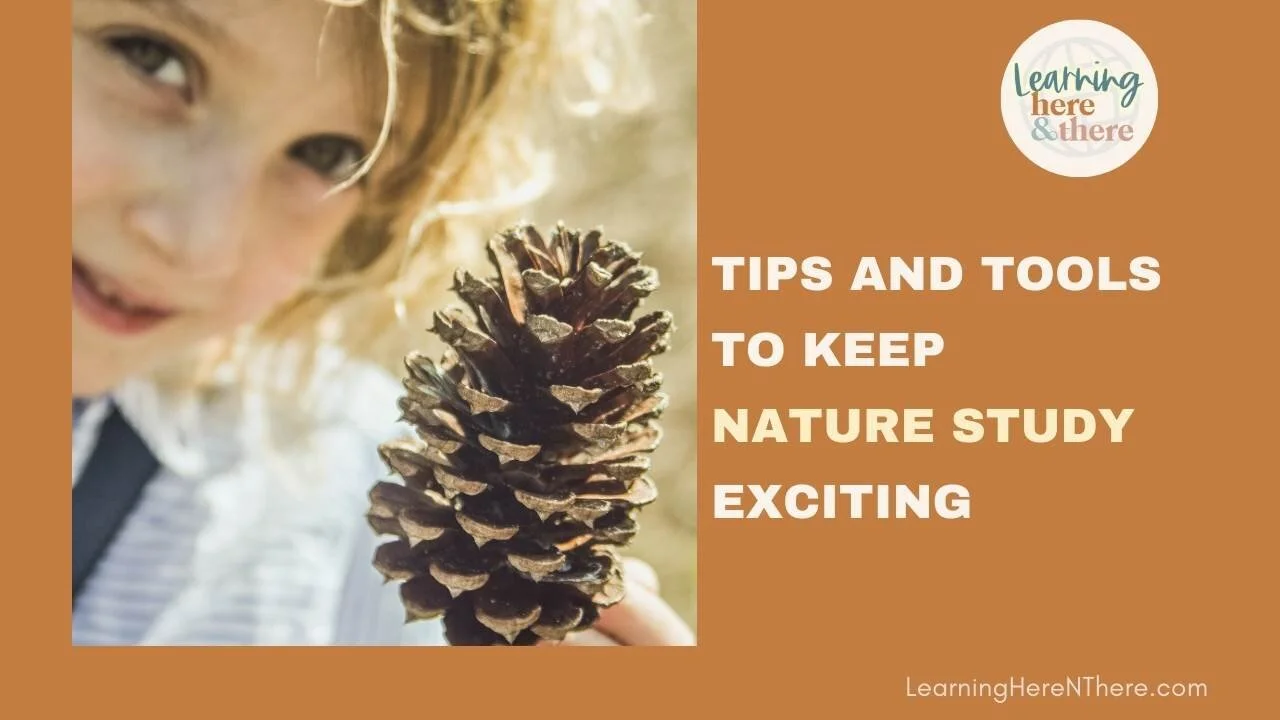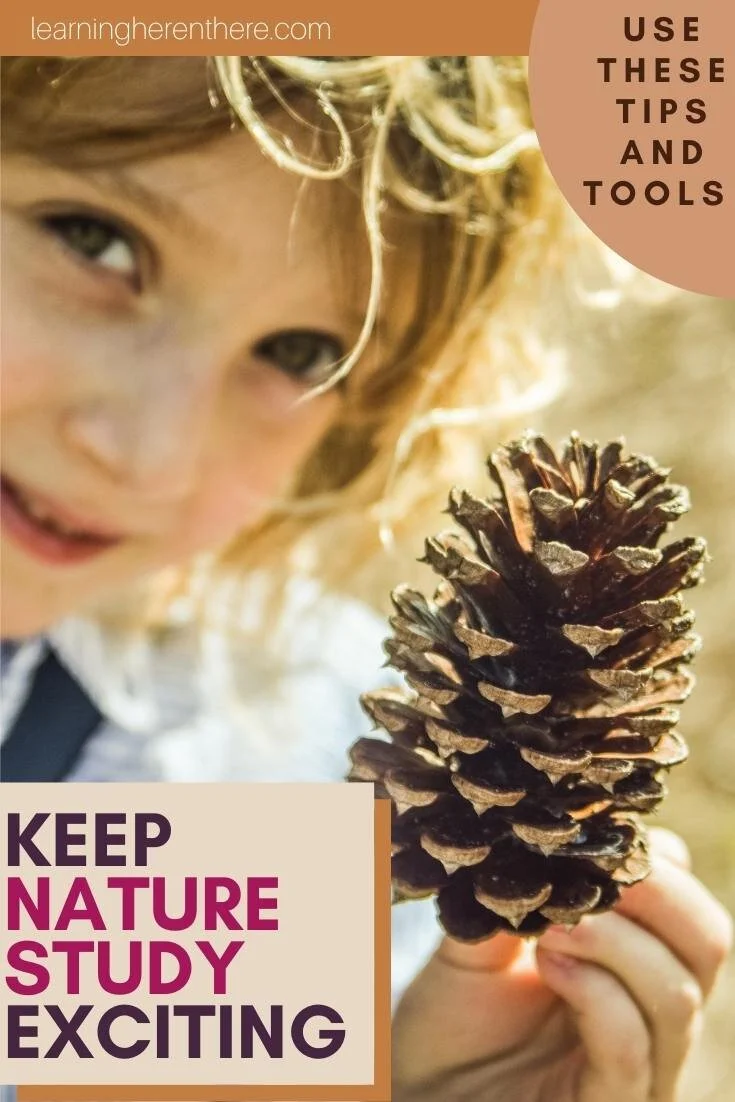Keep Nature Study Exciting with these Tools and Activities
On this venture into homeschooling, I’ve fallen in love with the Charlotte Mason method of education. We aren’t strict followers, but I see the wisdom in many of her ideas such as learning through living literature and nature study.
But I’ll be honest, our nature study has stagnated several times over the last few years, and it isn’t until I have an idea of how we can take a fresh approach to it with new tools or activities that we get excited about it all over again.
I want to share those exciting ideas with you here in case you are in search of ways to make nature exploration exciting.
Why Study Nature
Exploring, observing, and studying nature is beneficial to kids and the whole family for so many reasons even if you’re not interested in Charlotte Mason or homeschooling.
Lots of science can be learned by exploring nature.
Observing nature builds empathy for our world.
It provides the physical benefits of fresh air and exercise.
Promotes family bonding time.
Studies show that kids who don’t spend enough time outdoors develop vision problems.
Kids seem to be calmer and happier after having spent time in nature.
Read more here about ways nature can reduce device time for kids.
How to do Nature Study
If you’re just getting started with nature study, you may want to check out this post from Year-round Homeschooling. But really it’s quite simple.
The brilliance behind nature study is that it doesn’t have to be complicated. You walk outside and look for a piece of nature to observe. Talk about it, maybe sketch it in a journal or write down some observations. You can even create a diagram with labeled parts if you want to get more scientific.
You can do this in your backyard, a city park, or even using the trees planted along city sidewalks.
Though it’s not ideal, you can even stay indoors and observe nature (including clouds) from your windows. Or use the internet to look up something you took a picture of while on a family vacation to the beach.
Keep it simple.
But sometimes simple gets boring. Without complicating things, I like to bring out a new tool or give our nature study a different focus. That’s what I’m listing below.
This post includes affiliate links. As an Amazon affiliate, I earn a small commission on purchases made through these links at no extra cost to you.
How to Make Nature Study more Exciting
Change your setting: Whether you just go to a different park on the other side of town or you take a field trip to a conservation center, arboretum, or zoo, changing the place where you explore nature can breathe fresh life into your nature study.
Give your nature explorations a specific focus.
Try identifying signs of fall as you go on your walk. (Make it scientific by learning about why leaves change color.)
Count how many different kinds of flowers you encounter in the area. (Can you identify them and any of their plant parts?)
Do a color wheel scavenger hunt for items from nature like the one linked to here.
Or look specifically for pollinators. (Use a field guide like the one below and library books to help you learn more about these workers that are a building block of our world’s food sources.)
Find things that start with the letter B (or other letter).
Look for possible animal homes.
Introduce a new tool for helping with observations. I’ve listed some of our favorites below.
Every kid should have a magnifying lens to carry outdoors (if at all possible). Even the cheap ones you can get at the dollar store make a big difference in the details you can see when observing a rock, leaf, or bug. You have to take a moment to teach (and remind) kids how to use it, and then they might surprise you with all the tiny details they start to spot.
I love these pocket guides for lots of reasons.
You can get them for butterflies, birds, moths, and all kinds of other things you might encounter in nature.
They’re waterproof.
They’re filled with full-color photographs.
You can find some that are specific to the region where you live.
They’re small which makes them portable, but they also fold out and are covered with pictures all over the front and back to help you identify the specimen you’ve seen in real life.
We’ve had our insect observer for many years. Kids of all ages (and adults) enjoy getting a closer look at the insects (or plant parts) you capture. The other day we caught a little black ant and a moth. The magnifying lens combined with the small containers allowed us to get a more detailed look at these critters.
This pocket microscope is pretty amazing. Just set it on a flat surface and turn it on. Kids (and adults) will be stunned at how things look when magnified so much. It’s great for looking at still items such as leaves, bark, stones, etc…
We’ve had this waterproof camera for a few years now. We started letting our daughter use it when she was six. It’s been used at the beach, in tide pools, while hiking/camping and in our own back yard. We have fully submerged it many times to get underwater shots. It’s a durable fun tool that really encourages kids to slow down and really look at what’s around them. Although it’s a small camera, the quality of the pictures is way better than those you’ll get from a smart phone.
I hope these tips and tools have inspired you to find ways to make nature study more exciting. Be sure to save these ideas to come back to again.
The image below is pinnable. Thanks.







